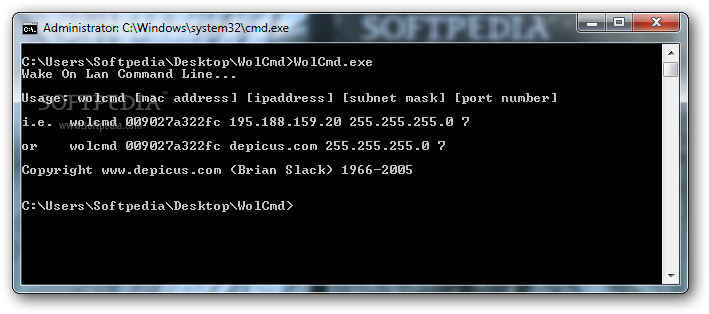
After a power outage, the system’s state is simply read from disk instead of RAM. The current state is buffered in RAM, but it is also written to disk.
WOL WAKE UP WINDOWS
That would be true if Windows did not use “Hybrid Sleep” by default, which is a combination of Sleep and Hibernate. Minimum = 3ms, Maximum = 8ms, Average = 5msĪs you can see, only two pings are lost! Robustnessīut wait, you may say, if my home server sleeps most of the time, with its RAM buffered by electrical power, what happens during a power outage? The machine would be reset brutally. Packets: Sent = 4, Received = 3, Lost = 1 (25% loss),Īpproximate round trip times in milli-seconds: Reply from 192.168.0.24: Destination host unreachable. If that does not convince you, the following test made against my home file server might: C:\>ping hkserver From personal experience I can tell you that wakeup is extremely fast. With your home server in sleep mode most of the time you might wonder how long it takes for the machine to wake up. This is because, as KB2776718 states, “users expect zero power consumption and battery drain in the shutdown state”.
WOL WAKE UP WINDOWS 8
Windows 8 is a bit special: Wake-On-LAN is only supported from sleep or hibernate, not from hybrid or classic shutdown. This is what the entire configuration looks like: waterfront homes for rent in south carolina. I have disabled the low power mode, and set it to remote wake up. Since there are only a handful of devices on the network and those do not talk to the server constantly we can simple instruct the server to wake up whenever anyone talks to it. However, the 780s will not respond to a WOL. Those are certainly necessary in enterprise environments, but in the typical home network the situation is much simpler. Those of you that know Wake-on-LAN may think of magic packets and networking tools. Getting Windows to wake up on demand sounds like a difficult thing.

We do not have to do anything the default power plan instructs Windows to go to sleep after 20 minutes of inactivity. Windows can easily be configured to put the computer into sleep mode (where modern PCs consume approx. Turning it on and off manually is not very appealing, either. Having a server at home is a great luxury, but having a computer running 24×7 is an extreme waste of energy.


 0 kommentar(er)
0 kommentar(er)
